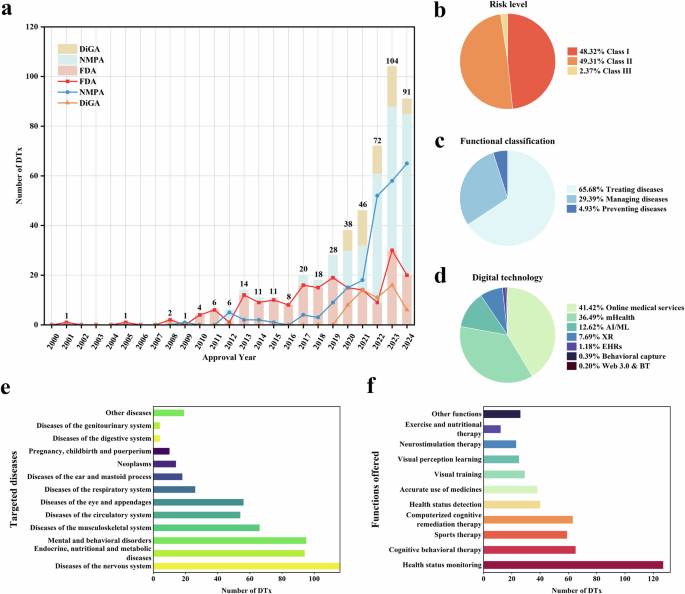South Korea Telemedicine Market Trends, Competition,
Dublin, Oct. 10, 2024 (GLOBE NEWSWIRE) — The “South Korea Telemedicine Market, By Region, Competition, Forecast & Opportunities, 2019-2029F” report has been added to ResearchAndMarkets.com’s offering.
South Korea Telemedicine Market was valued at USD 2.02 billion in 2023 and is expected to reach USD 3.46 billion by 2029 with a CAGR of 9.39%
The South Korea telemedicine market is primarily driven by several key factors such as increasing demand for healthcare services, particularly due to an aging population and a rise in chronic diseases, has created a pressing need for accessible medical care. Technological advancements, such as mobile applications and high-speed internet, facilitate seamless remote consultations, enhancing patient engagement. Government support, particularly during the COVID-19 pandemic, has led to favorable policies and reimbursement frameworks that encourage the adoption of telehealth services.

Rising healthcare costs also play a significant role, as telemedicine offers a more affordable alternative to traditional healthcare delivery. Improved patient outcomes, achieved through timely access to care and effective disease management, further boost the market’s appeal. The shift toward preventive care aligns well with telemedicine, allowing for regular check-ups and health monitoring.
Changing patient expectations for convenience and personalized care options drive the demand for telemedicine, making it an integral component of the evolving healthcare landscape in South Korea. Together, these factors position telemedicine for significant growth in the coming years.
Shift Towards Preventive Care
There is a growing emphasis on preventive care in South Korea, and telemedicine plays a pivotal role in this paradigm shift. As healthcare systems evolve from reactive to proactive models, telehealth services provide an avenue for regular health check-ups, screenings, and lifestyle management consultations. This focus on prevention helps in the early detection of diseases, significantly improving long-term health outcomes.
Telemedicine platforms can facilitate educational resources and health management tools that empower patients to take charge of their health. By promoting healthy behaviors and providing ongoing support, telemedicine aligns with the broader goals of preventive care, making it an attractive option for both patients and healthcare providers. This shift is likely to drive the continued expansion of the South Korea Telemedicine Market.
Increased Internet and Smartphone Penetration
The rapid increase in internet connectivity and smartphone penetration in South Korea is a significant driver of the South Korea Telemedicine Market. With a high percentage of the population accessing the internet and utilizing smartphones, healthcare providers have the opportunity to reach a broader audience. This technological readiness facilitates the adoption of telemedicine services, as patients can easily access healthcare applications and platforms from their mobile devices.
The convenience of scheduling appointments, accessing medical records, and communicating with healthcare professionals via smartphones enhances the overall patient experience. As more people become comfortable with using technology for everyday tasks, the acceptance of telemedicine is likely to grow. This trend positions telemedicine as a fundamental component of modern healthcare delivery in South Korea.
Key Attributes:
| Report Attribute | Details |
| No. of Pages | 82 |
| Forecast Period | 2023 – 2029 |
| Estimated Market Value (USD) in 2023 | $2.02 Billion |
| Forecasted Market Value (USD) by 2029 | $3.46 Billion |
| Compound Annual Growth Rate | 9.3% |
| Regions Covered | South Korea |
South Korea TelemedicineSegmental Insights
Dominance of Services: The services segment currently dominates the global telemedicine market.
- Drivers of Growth: This trend is driven by the rising demand for remote healthcare consultations, increased prevalence of chronic diseases, and changes in patient care delivery methods.
- Telemedicine Offerings: Services encompass virtual consultations, remote patient monitoring, and telehealth platforms connecting healthcare providers with patients.
Shift in Healthcare Delivery:
- Impact of COVID-19: The pandemic accelerated the adoption of telemedicine, with patients seeking alternatives to in-person visits.
- Growth in Telehealth: Increased focus on platforms for virtual consultations, allowing healthcare professionals to assess and treat patients without physical presence.
Remote Patient Monitoring:
- Real-Time Tracking: Remote monitoring services have gained traction, enabling healthcare providers to track vital signs and health metrics in real time.
- Importance for Chronic Conditions: Particularly valuable for managing diabetes, hypertension, and cardiovascular diseases, enhancing patient engagement and adherence to treatment plans.
South Korea TelemedicineApplication Insights
Teleradiology Dominance: Teleradiology is the dominant application segment in telemedicine.
- Critical Role in Diagnostics: Involves transmitting radiological images (e.g., X-rays, CT scans, MRIs) for interpretation by radiologists.
- Widespread Adoption: Essential for timely and accurate diagnostics, especially in advanced healthcare settings like South Korea.
Demand for Rapid Diagnosis:
- Aging Population: Increasing demand for imaging services due to the aging population and rising incidence of chronic diseases.
- Speed and Accuracy: Teleradiology allows for quicker diagnostic results, crucial for effective treatment planning, particularly in emergencies.
COVID-19 Impact:
- Shift to Remote Work: The pandemic accelerated the adoption of teleradiology as radiologists could work remotely, maintaining diagnostic services while minimizing virus transmission.
- Investment in Solutions: Healthcare facilities have invested in teleradiology solutions, reinforcing its market dominance.
South Korea TelemedicineRegional Insights
Southern Region of South Korea: Dominates the telemedicine market due to:
- Advanced Healthcare Infrastructure: Home to leading hospitals and medical centers that integrate telemedicine into their offerings.
- High Population Density: Major cities like Busan and Ulsan foster a strong market for telemedicine initiatives.
Supportive Environment:
- Government and Private Sector Initiatives: Active support from local authorities and significant investments in telehealth technologies improve access to specialist care.
- Technology-Savvy Professionals: Higher concentration of skilled healthcare providers fosters an environment conducive to telemedicine adoption.
Educational Institutions: Focus on training healthcare professionals in telehealth practices ensures a skilled workforce capable of leveraging digital tools effectively.
Government Policies: Initiatives promoting telemedicine aim to improve healthcare access, particularly in underserved areas, alleviating the burden on healthcare facilities.
Report Scope:
South Korea Telemedicine Key Market Players are
- Medihere Co.
- SK Telecom Co., Ltd.
- Ariacare Korea Co., Ltd.
- KT Corp
- OMNI C&S. Inc
South Korea Telemedicine Market, By Component:
South Korea Telemedicine Market, By Application:
- Teleradiology
- Telepsychiatry
- Telepathology
- Tele dermatology
- Others
South Korea Telemedicine Market, By End User:
- Providers
- Payers
- Patients
- Others
South Korea Telemedicine Market, By Region:
For more information about this report visit
About ResearchAndMarkets.com
ResearchAndMarkets.com is the world’s leading source for international market research reports and market data. We provide you with the latest data on international and regional markets, key industries, the top companies, new products and the latest trends.
- South Korean Telemedicine Market

link







